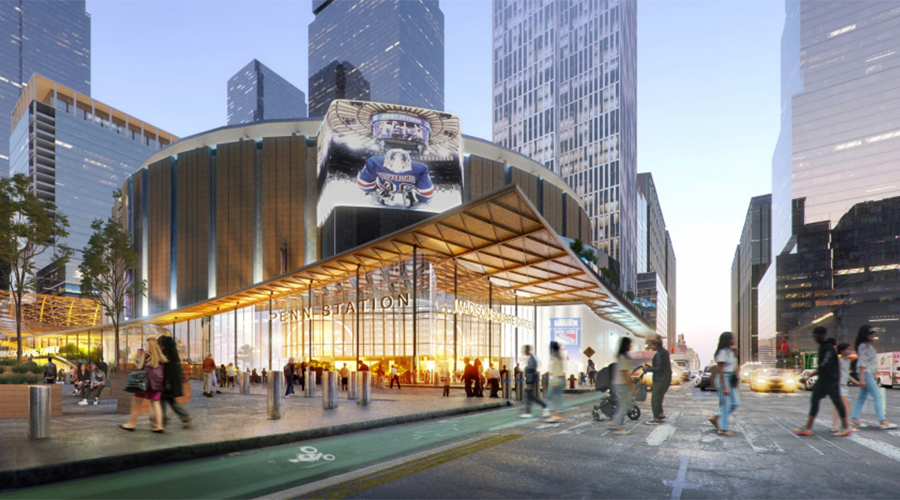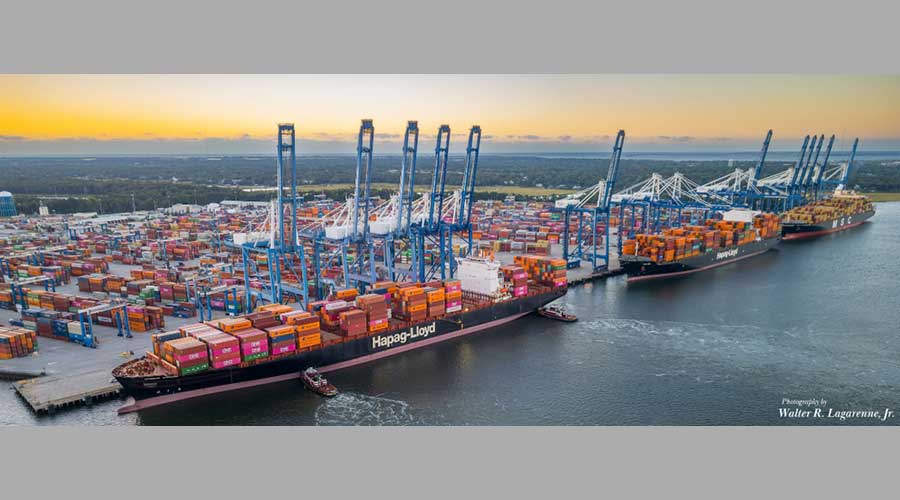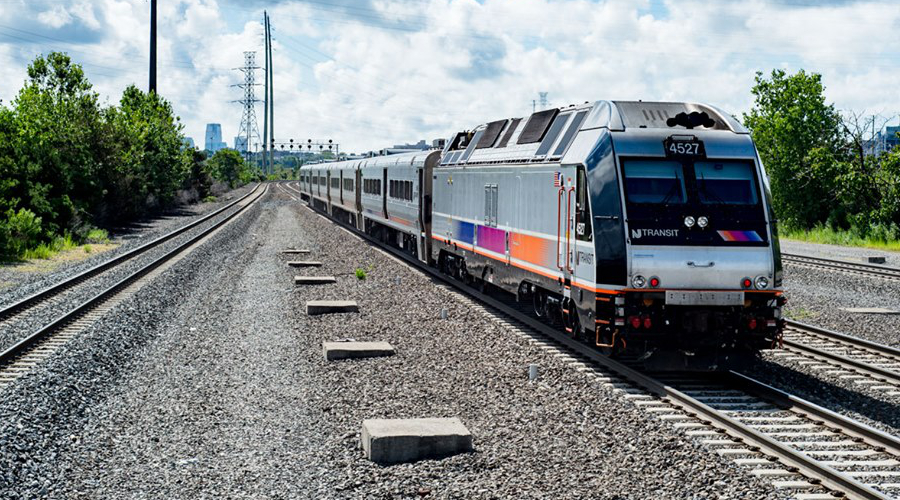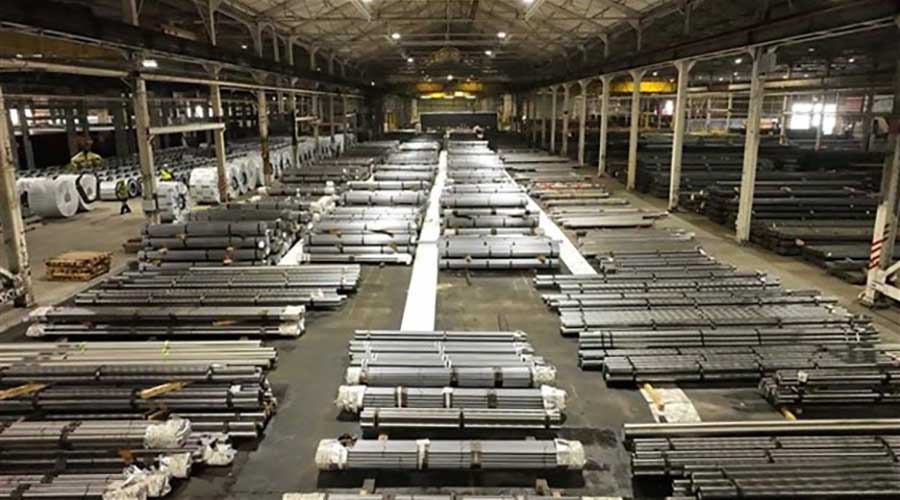Newsletter Sign Up
Stay updated on news, articles and information for the rail industry
Stay updated on news, articles and information for the rail industry
RAIL EMPLOYMENT & NOTICES
Rail News Home
High-Speed Rail
Rail News: High-Speed Rail
3/30/2011
Rail News: High-Speed Rail
Bombardier's Bachant talks U.S. HSR progress, but also notes frustrations
advertisement
Yesterday, Bombardier Transportation North America President Raymond Bachant was in Chicago to give a keynote address during a luncheon for the Canada-U.S. Business Council. The program’s title? “The Time is Now for High-Speed Rail.”
During his speech, Bachant discussed high-speed rail development in the United States; the need for consistent, continued funding, the creation of an integrated transportation network that includes high-speed rail, and the various products Bombardier manufactures that would accommodate high-speed rail in North America.
 After his presentation, Bachant spoke with HSRupdates.com to give his thoughts on the progress (or lack thereof) that’s been made on the U.S. high-speed rail program to date and how Bombardier is gearing up to help advance high-speed rail in the country. He also noted recent HSR setbacks and the frustrations they’ve caused for industry suppliers.
After his presentation, Bachant spoke with HSRupdates.com to give his thoughts on the progress (or lack thereof) that’s been made on the U.S. high-speed rail program to date and how Bombardier is gearing up to help advance high-speed rail in the country. He also noted recent HSR setbacks and the frustrations they’ve caused for industry suppliers.
Since President Barack Obama announced recipients of the $8 billion in American Recovery and Reinvestment Act dollars for high-speed rail projects in January 2009, states and the Federal Railroad Administration have made progress with various high-speed rail projects, but not fast enough, Bachant believes.
“We have a factory already available with capacity to build trains, but we haven’t seen any RFPs yet,” he says.
It doesn’t help that the High-Speed Intercity Passenger Rail program has had some setbacks in recent months as newly elected Republican governors have returned high-speed dollars back to the federal government — most recently, in Florida. Bombardier was part of one of the consortiums preparing to bid on the Tampa-Orlando project.
“That’s not good publicity, when a state says they’re not in favor,” says Bachant. “I’m not going to get into politics — that’s not my job — but the momentum has been slowed down by this negative press. There’s not a common will about investing.”
Some states might have a better chance of garnering more support for high-speed rail if they take a phased approach, Bachant believes. A state can incrementally launch high-speed rail service up to 110 mph to “create an appetite” for high-speed rail — without asking taxpayers to fork over billions of dollars — then add faster rail service in a subsequent phase, he says.
“If a project is too costly and takes so much time, it will lose its effect. If you do it in phases, people will start to ride it, they’ll love it and five or 10 years later, they’ll be willing to go and spend money for higher speeds,” says Bachant. “Illinois is building [high-speed rail] in phases, and I think that’s the way to go.”
As states begin to examine rolling stock options to accommodate high- and higher-speed rail service, Bombardier will be more than ready to compete for contracts, he says. The manufacturer has created a new locomotive platform for the North American rail market, called the ALP, which is capable of reaching speeds up to 125 mph. Bombardier also now manufactures a multi-level passenger car that can accommodate 125 mph service. For states such as California, which is proposing to operate 220 mph service, Bombardier could adapt its latest high-speed train, the ZEFIRO — which has been ordered by rail providers in China and Italy — for the U.S. market.
“We have a big inventory of technology and we’re continuing to invest in technology,” says Bachant. “We have a product range that we are continuing to develop in anticipation of the market that we believe will be requesting such products.”
Bombardier also continues to invest manpower for U.S. high-speed rail, with employees such as Jack Martinson, Bombardier’s director of business development and sales, devoting their time to monitoring high-speed rail prospects in the country and preparing Bombardier to pursue opportunities as they arise.
But opportunities for Bombardier — and all rail industry suppliers, really — will be scarce unless there’s a consistent funding source for high-speed and intercity passenger rail. There also needs to be a political will that transcends changes in state and federal government, Bachant says.
Bombardier believes high-speed rail will become a reality in the country — the company wouldn’t be investing resources and manpower if it didn’t, says Bachant. So until those orders come rolling in, Bachant and other Bombardier officials will work to promote the high-speed message in the United States.
“There are economic benefits associated with high-speed rail that will create jobs not only for the short term, but for people to continue to operate and run it,” says Bachant. “In Europe, people are using this mode of transportation. In North America, we’re still used to using our own car. We need to promote this and that takes time.”
— Angela Cotey
During his speech, Bachant discussed high-speed rail development in the United States; the need for consistent, continued funding, the creation of an integrated transportation network that includes high-speed rail, and the various products Bombardier manufactures that would accommodate high-speed rail in North America.
 After his presentation, Bachant spoke with HSRupdates.com to give his thoughts on the progress (or lack thereof) that’s been made on the U.S. high-speed rail program to date and how Bombardier is gearing up to help advance high-speed rail in the country. He also noted recent HSR setbacks and the frustrations they’ve caused for industry suppliers.
After his presentation, Bachant spoke with HSRupdates.com to give his thoughts on the progress (or lack thereof) that’s been made on the U.S. high-speed rail program to date and how Bombardier is gearing up to help advance high-speed rail in the country. He also noted recent HSR setbacks and the frustrations they’ve caused for industry suppliers.Since President Barack Obama announced recipients of the $8 billion in American Recovery and Reinvestment Act dollars for high-speed rail projects in January 2009, states and the Federal Railroad Administration have made progress with various high-speed rail projects, but not fast enough, Bachant believes.
“We have a factory already available with capacity to build trains, but we haven’t seen any RFPs yet,” he says.
It doesn’t help that the High-Speed Intercity Passenger Rail program has had some setbacks in recent months as newly elected Republican governors have returned high-speed dollars back to the federal government — most recently, in Florida. Bombardier was part of one of the consortiums preparing to bid on the Tampa-Orlando project.
“That’s not good publicity, when a state says they’re not in favor,” says Bachant. “I’m not going to get into politics — that’s not my job — but the momentum has been slowed down by this negative press. There’s not a common will about investing.”
Some states might have a better chance of garnering more support for high-speed rail if they take a phased approach, Bachant believes. A state can incrementally launch high-speed rail service up to 110 mph to “create an appetite” for high-speed rail — without asking taxpayers to fork over billions of dollars — then add faster rail service in a subsequent phase, he says.
“If a project is too costly and takes so much time, it will lose its effect. If you do it in phases, people will start to ride it, they’ll love it and five or 10 years later, they’ll be willing to go and spend money for higher speeds,” says Bachant. “Illinois is building [high-speed rail] in phases, and I think that’s the way to go.”
As states begin to examine rolling stock options to accommodate high- and higher-speed rail service, Bombardier will be more than ready to compete for contracts, he says. The manufacturer has created a new locomotive platform for the North American rail market, called the ALP, which is capable of reaching speeds up to 125 mph. Bombardier also now manufactures a multi-level passenger car that can accommodate 125 mph service. For states such as California, which is proposing to operate 220 mph service, Bombardier could adapt its latest high-speed train, the ZEFIRO — which has been ordered by rail providers in China and Italy — for the U.S. market.
“We have a big inventory of technology and we’re continuing to invest in technology,” says Bachant. “We have a product range that we are continuing to develop in anticipation of the market that we believe will be requesting such products.”
Bombardier also continues to invest manpower for U.S. high-speed rail, with employees such as Jack Martinson, Bombardier’s director of business development and sales, devoting their time to monitoring high-speed rail prospects in the country and preparing Bombardier to pursue opportunities as they arise.
But opportunities for Bombardier — and all rail industry suppliers, really — will be scarce unless there’s a consistent funding source for high-speed and intercity passenger rail. There also needs to be a political will that transcends changes in state and federal government, Bachant says.
Bombardier believes high-speed rail will become a reality in the country — the company wouldn’t be investing resources and manpower if it didn’t, says Bachant. So until those orders come rolling in, Bachant and other Bombardier officials will work to promote the high-speed message in the United States.
“There are economic benefits associated with high-speed rail that will create jobs not only for the short term, but for people to continue to operate and run it,” says Bachant. “In Europe, people are using this mode of transportation. In North America, we’re still used to using our own car. We need to promote this and that takes time.”
— Angela Cotey


 2025 MOW Spending Report: Passenger-rail programs
2025 MOW Spending Report: Passenger-rail programs
 Gardner steps down as Amtrak CEO
Gardner steps down as Amtrak CEO
 Guest comment: Oliver Wyman’s David Hunt
Guest comment: Oliver Wyman’s David Hunt
 Women of Influence in Rail eBook
Women of Influence in Rail eBook
 railPrime
railPrime







